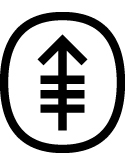| Abstract: |
Patients with non-myeloid hematologic malignancies (including Hodgkin's and non-Hodgkin's lymphomas, myeloma and acute lymphoid leukemia) or solid tumors underwent cytoreductive conditioning regimens followed by either autologous bone marrow transplantation (ABMT) (n = 343) or transplantation of peripheral blood stem cells (PBSC) with (n = 44) or without bone marrow (BM) (n = 16). In a randomized doubleblind phase III multi-center trial, patients received either granulocyte-macrophage colony-stimulating factor (GM-CSF, 10 μg/kg/day) or placebo by daily i.v., infusion beginning 24 h after bone marrow infusion and continuing until the absolute neutrophil count (ANC) had recovered to ≤ 1000/mm3, or for a maximum of 30 days. Median time to neutrophil recovery was significantly shorter in the GM-CSF group (18 vs 27 days, P < 0.001), and more GM-CSF patients had neutrophil recovery by day 30 (70 vs 48%). Median duration of hospitalization was significantly shorter in the GM-CSF group (29 vs 32 days, P = 0.02). GM-CSF significantly reduced the median time to neutrophil recovery in patients receiving bone marrow only (19 vs 27 days, P < 0.001) or PBSC with or without bone marrow (14 vs 21 days, P < 0.001). The overall incidence of adverse events was comparable in the two groups, although more patients in the GM-CSF group discontinued treatment due to adverse events (17 vs 9%, P < 0.001). No difference was noted in infection incidence or time to platelet independence. GM-CSF had no negative impact on time to relapse or long-term survival. These data indicate the positive influence of GM-CSF on neutrophil recovery acid hospital stay in patients receiving ABMT for a variety of clinical indications. |



